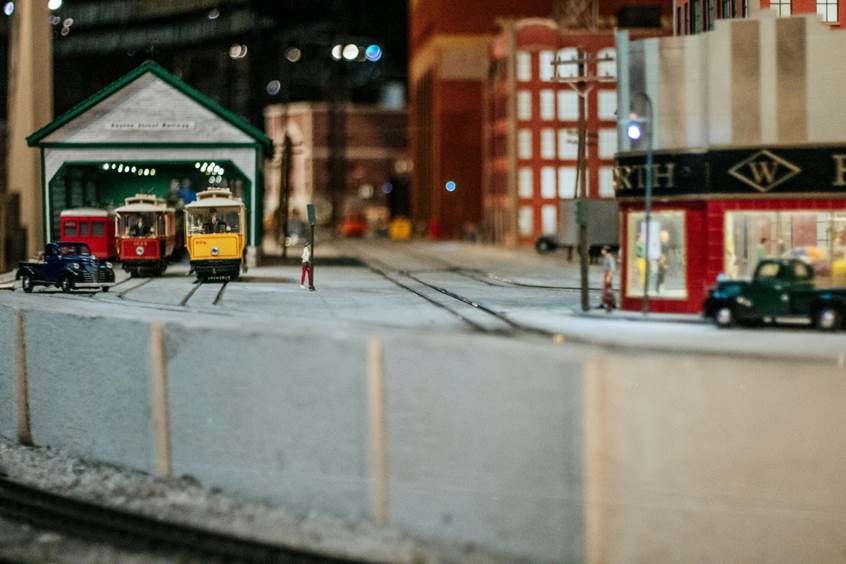
The Ultimate Guide to Building Your Model Train Collection

The Ultimate Guide to Building Your Model Train Collection
Discover essential tips and strategies for building a thriving model train collection. Start your journey today by reading our comprehensive guide!
Getting Started: Building a Model Train Collection
Embarking on the journey of model train collecting can be an exciting and rewarding experience. Understanding the basics is essential, whether you’re a complete novice or just looking to expand your knowledge.
In this guide, we’ll help you navigate the world of model trains and locomotives, from selecting the perfect scale for your collection to exploring creative layout ideas and essential tips for beginners. Let’s get started!
Understanding Train Scales and Gauges
When diving into the world of model trains, it’s essential to understand the differences between various scales such as HO, N, Z, and others. Each scale has unique characteristics, so choosing the right one based on your space and model railroaders’ goals is important.
HO Scale Trains
HO scale trains, or “Half O,” are popular among model railway enthusiasts due to their 1:87 ratio, allowing for detailed layouts. However, they may not be ideal for those with limited space, as they can be larger than smaller scales.
O Scale Trains
With a 1:48 ratio, O scale trains feature wide, stable tracks ideal for tabletop or floor setups. They offer a robust option for modelers looking for larger displays, allowing for intricate detailing but requiring ample space for a functioning layout.
N scale trains
N scale trains, scaled at 1:148 and 1:160, are an excellent option for hobbyists with limited space or budget. They offer a good balance of size and detail, and accessories are typically easier to find, making them practical for beginners.
Z scale trains
Z scale trains, at a ratio of 1:220, are the smallest commonly used scale, ideal for modelers with limited space. Their compact size allows for intricate layouts, making them popular for cityscapes and detailed scenes.
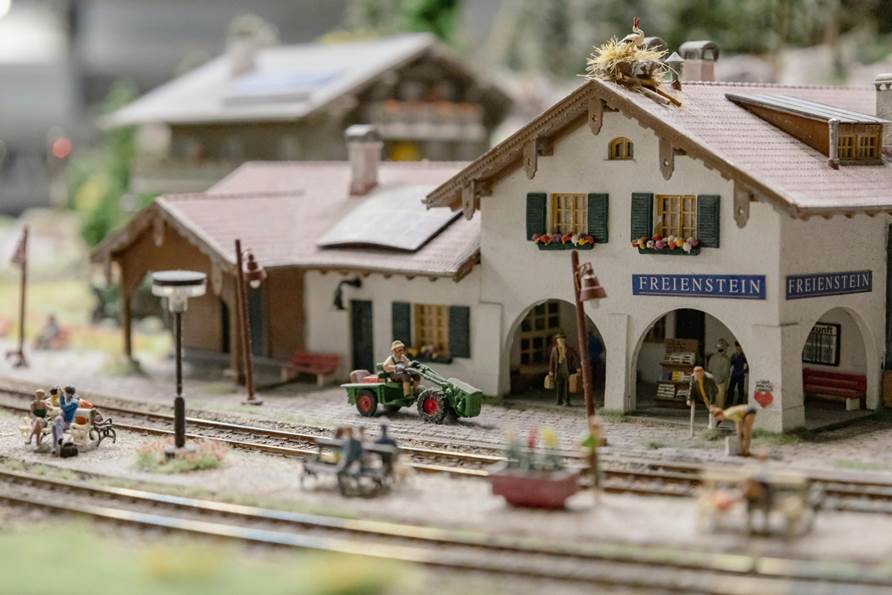
What Makes a Model Train Set Valuable?
Find out what drives value in the collector’s market, from rare models to original packaging and historical significance.
Valuable model trains
- Lionel Trains is an iconic brand known for its rich history and innovative designs. Its resilience during the Great Depression and ability to produce durable, Lionel trains have solidified its status among enthusiasts.
- BRIO is a popular model train community known for its steam engine-inspired designs. Their sets include magnetized train cars, engines, and cabooses for easy disconnection, making them user-friendly for younger fans.
- Athearn Trains are sought after for their accurate models and detailed replicas of freight cars, locomotives, and passenger cars. Known for their innovative styles and robust build quality, collectors appreciate their longevity, ensuring they can be treasured for years.
What drives worth?
- Rarity: A rare model can create high demand, often increasing prices due to scarcity. Collectors should be looking for special editions, unique variants, or models that are no longer in production, as these tend to be more valuable.
- Condition: The condition is another crucial determinant of its worth. Models in excellent condition typically fetch higher prices, particularly those in their original packaging or those that have never been used. Conversely, trains that show signs of wear or have missing parts are often less valuable.
- Brand Recognition: Well-known names like Hornby, Lionel, and Märklin are often at the top of collectors’ wish lists. Due to their reputations and histories in the model train industry, these established brands command higher prices.

How to Store and Organize Your Collection Safely
Proper storage is key to keeping your model trains in great condition.
Organizing your model trains
To effectively organize your model trains, start with a comprehensive inventory list. This list should include all types of items in your collection, such as tracks, rolling stock, accessories, and locomotives. Be diligent in noting important details such as the how much you paid, condition, model, and brand of each item. Be sure to note whether it’s in the original box or not. Additionally, labeling your collection can streamline the organization process, making it easier to find specific pieces when needed.
Storage solutions
- Drawers are a practical choice, particularly custom-built ones, which can accommodate small and loose pieces efficiently. For added protection, wrap individual items in acid-free tissue paper to prevent damage over time.
- Shelving is another viable option, especially if you have limited storage space or a smaller collection. It allows for easy access while keeping your collection organized.
- Archival-quality storage boxes are acid-free and provide excellent protection for your rolling stock, model locomotives, and trains, preserving their condition for years to come.
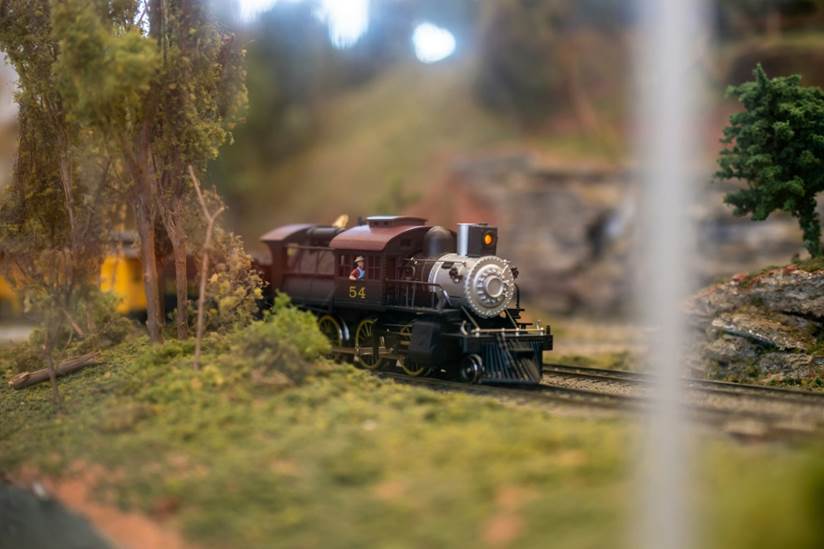
Creative Display Solutions for Model Trains
Showcasing your model trains can be a rewarding endeavor, whether in a dedicated layout or a curio cabinet.
Displaying your model trains
For those with a dedicated model train layout, consider creating distinct scenes or dioramas that reflect different themes or eras. This enhances your hard work through storytelling. Pairing landscapes, buildings, and miniatures can bring your railroad to life. If you decide on a curio cabinet or shelf display, think about layering and organizing your trains to maximize visibility. Use stands or risers to add height and dimension, ensuring each model can be appreciated.
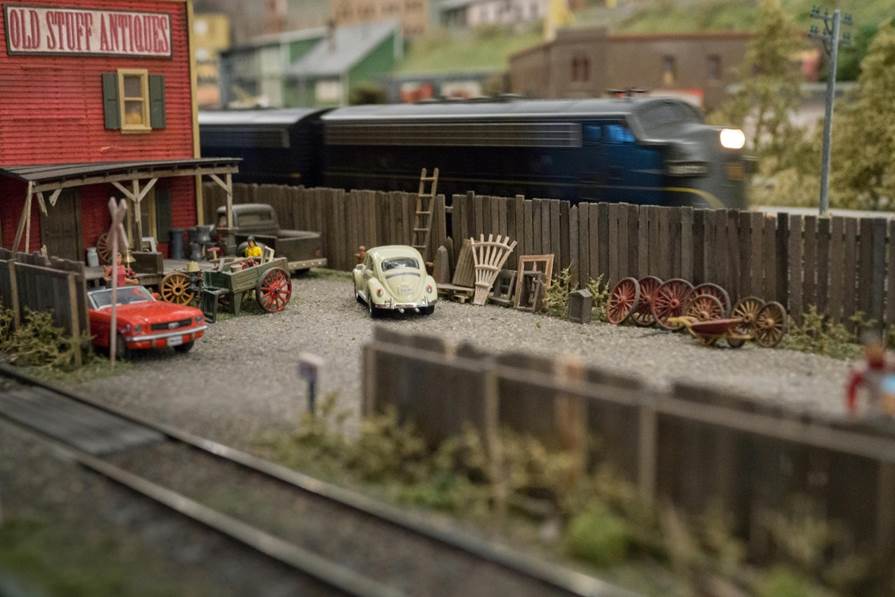
Maintenance and Preservation Tips for Long-Term Value
Dust, humidity, and mishandling can affect longevity—this section explains cleaning and maintenance tips for collectors.
Preservation tips
Proper storage away from direct sunlight and in a controlled environment can significantly extend their lifespan. Avoid places with high humidity, as moisture can lead to corrosion and damage to the trains and their tracks.
Maintenance tips
- Regular Cleaning: Consistent cleaning is essential for your model trains and tracks. Use a soft brush or compressed air to remove dust and debris, keeping your trains looking great and functioning properly.
- Lubrication and Electrical Checks: Lubricate moving parts with compatible oils and routinely check electrical components for wear or corrosion.
- Brand-Specific Cleaners: Some brands may have specific cleaning requirements. Always follow the manufacturer’s guidelines to maintain your model trains’ integrity and performance.
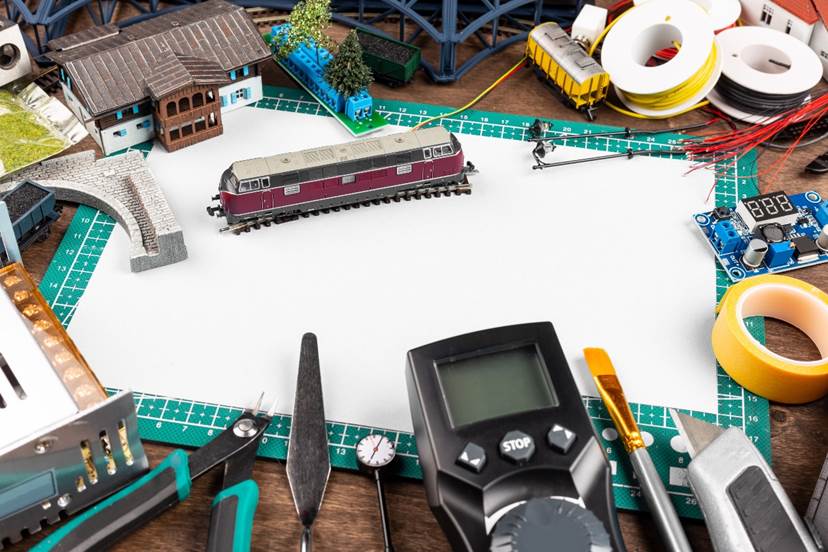
The Model Train Collector Community
Whether you’re an experienced collector or a newbie, connecting with others enhances your experience and offers valuable insights for growing your collection.
In-person connections
- Model train shows are fantastic venues where collectors can meet face-to-face, explore vendor offerings, and engage in discussions.
- Local hobby stores also often host events and gatherings, offering a more personal touch. They’re also great spaces for those who enjoy collecting classic toy trains and other items.
- Trade shows and conventions provide a larger-scale experience, allowing collectors to network with industry professionals and other hobbyists.
- Joining clubs can create a sense of belonging by offering regular meet-ups and shared projects.
Online engagement
- Forums dedicated to model trains are invaluable resources where members can exchange knowledge, seek advice, and trade items.
- Social media platforms and groups specifically focused on model railroading and toy trains also allow for broader connectivity, letting enthusiasts from around the globe share their experiences and collections.
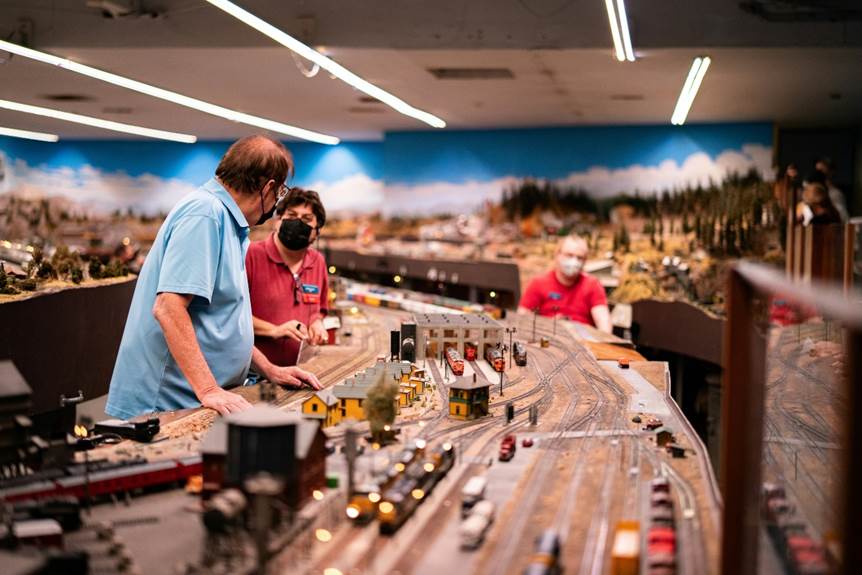
Model Trains as Investments
Model trains have long been a source for enthusiasts, but they can also serve as a meaningful investment opportunity.
Why invest in model trains?
The appeal of collectible train value lies in the uniqueness and craftsmanship found in various models. Limited-edition releases, vintage trains, and rare components often see dramatic rises in their worth. Those who are interested should take the first step in learning about certain sets that appreciate over time. These informed decisions enhance their collections if they wish to sell their collection.
Why Insurance Is a Must for Your Model Train Collection
Standard home insurance rarely covers the full value of specialized collectibles. Learn why dedicated coverage is essential.
Homeowners’ policy limitations
Homeowners’ insurance often does not fully cover specialized collectibles like model train collections. Policies typically value items at actual cash value, not current market value, and coverage is capped at 50-70% of the home’s total value. Additionally, losses from natural disasters such as floods and earthquakes are usually excluded, and coverage for collectibles is often limited or nonexistent.
Collectibles insurance
Collectibles insurance provides enhanced protection for your model train collection, covering accidental breakage, burglary, fire, theft, and more, with fewer exclusions.
How to Insure Your Model Train Collection
As a model train enthusiast, insuring your collection is vital for protecting your investment.
Documentation
Create a detailed inventory of your model train collection, including the brand, model, year, and condition of each item. Include high-quality pictures for ownership verification in case of theft or damage.
Appraisal and insurance
Have a professional appraise your model train collection for rarity, condition, and market demand. This formal appraisal is important for insurance and understanding your collection’s value. Then, contact insurance companies that cover collectibles, ensuring your policy protects against theft, fire, and damage. Keep your inventory and appraisal documents handy for any claims.
Protect your investment
To minimize risk, store them in a locked display cabinet or safe, ideally in a climate-controlled environment. Avoid areas prone to flooding or fire hazards, and perform regular maintenance and cleaning to keep your collection in excellent condition.
Sources
https://hobbiestogether.com/the-ultimate-guide-to-starting-a-model-train-collection/
https://www.americasantiquemall.com/post/all-aboard-our-guide-to-collecting-model-trains
https://www.trains.com/mrr/beginners/model-railroading-the-beginners-guide/
https://www.plazajapan.com/blog/the-guide-to-model-train-collection-for-beginners
https://charlesro.com/how-to-organize-your-model-trains/
https://www.gardnervillage.com/blog/Top-10-Train-Collecting-Tips-from-the-Pros-at-The-Train-Shoppe/
https://charlesro.com/what-makes-a-valuable-model-train-set/
https://traintrackshq.com/most-valuable-model-trains/
About Collectibles Insurance Services
Collectibles Insurance Services has been protecting collections since 1966 and all coverage is provided by a carrier with a group rating of “A” (Excellent) by AM Best, the leading rating agency for the insurance industry.
Comprehensive coverage includes, but is not limited to: accidental breakage, burglary, fire, flood, loss in the mail, theft, natural disasters, and other causes of loss unless specifically excluded from the policy. Deductibles start at $0 for collector policies and we provide coverage for the market value of your collection for losses in excess of $50.
Additionally the protection extends At home and away, and we don't require collection itemization and serial number nor extensive paperwork and red tape.
